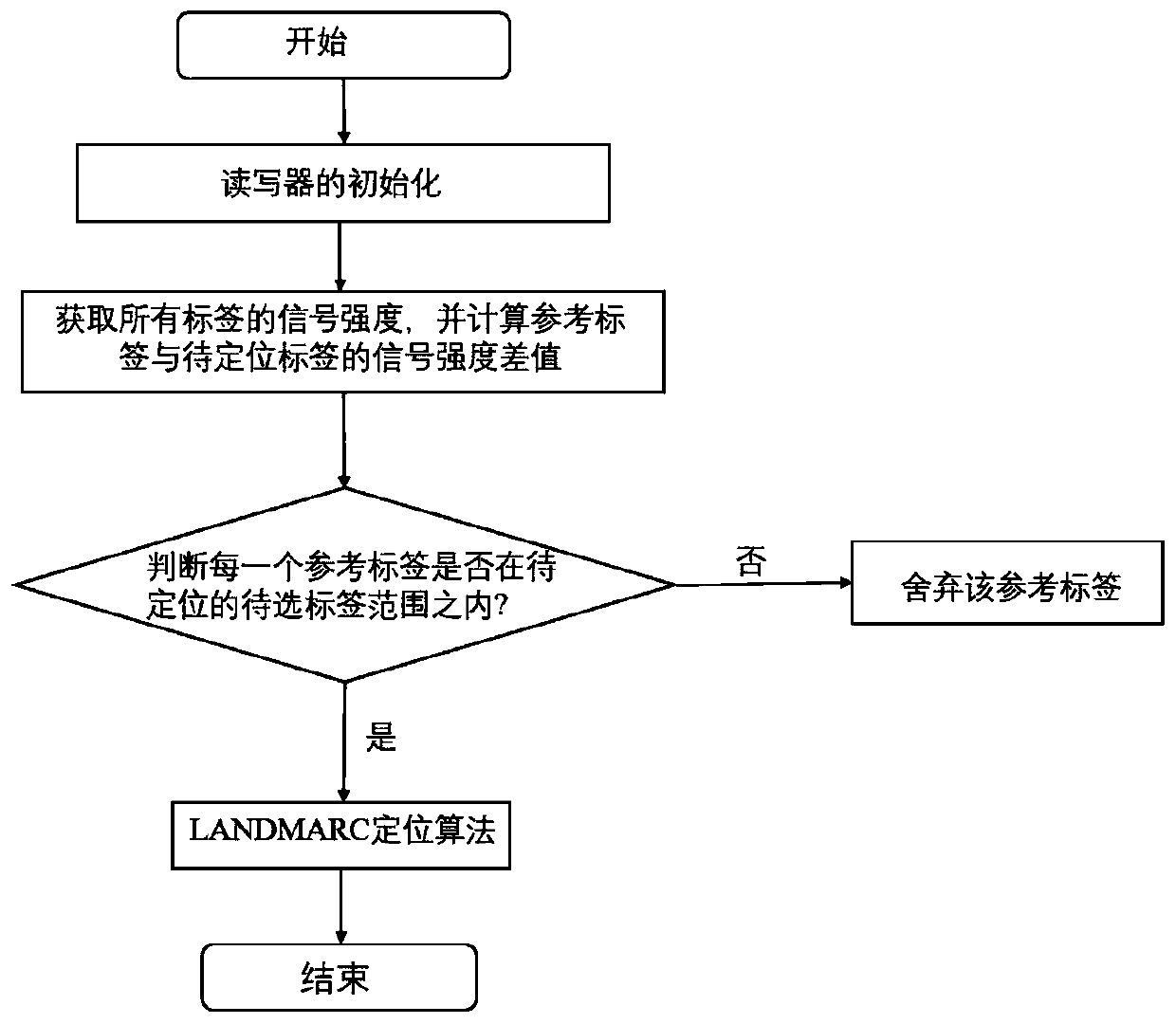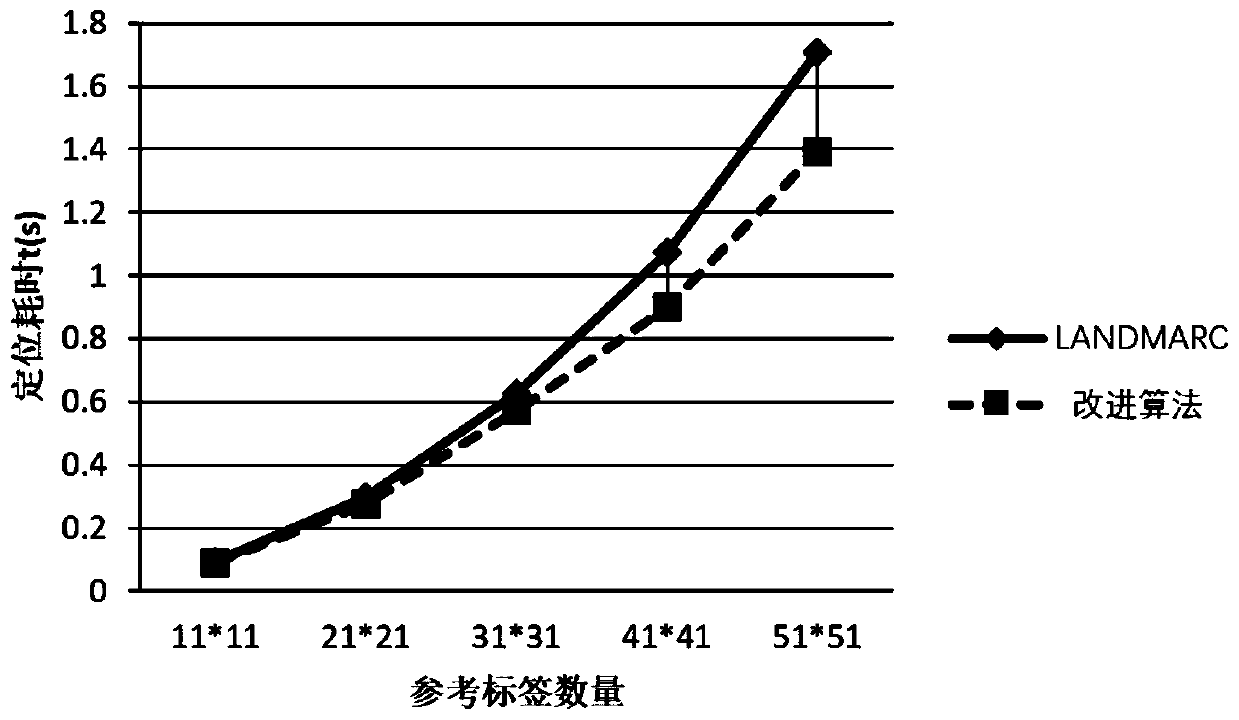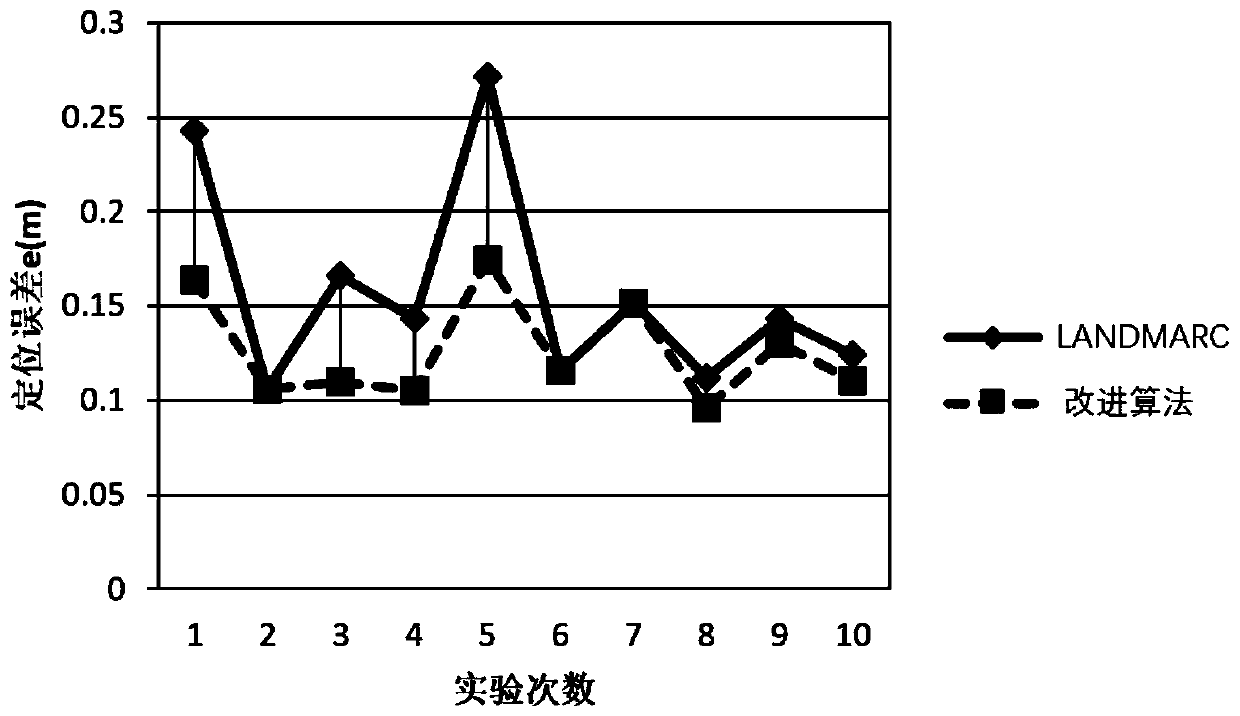Indoor positioning method based on RFID
An indoor positioning and positioning algorithm technology, applied in the field of RFID tag positioning of indoor systems, can solve problems such as redundant calculation, reduce the number of uses, eliminate some redundant calculations, and speed up positioning time.
- Summary
- Abstract
- Description
- Claims
- Application Information
AI Technical Summary
Problems solved by technology
Method used
Image
Examples
Embodiment Construction
[0033] The preferred embodiments of the present invention will be described in detail below in conjunction with the accompanying drawings, so that the advantages and features of the present invention can be more easily understood by those skilled in the art, so as to define the protection scope of the present invention more clearly.
[0034] refer to Figure 1 ~ Figure 3 , a RFID-based indoor positioning method, comprising the following steps:
[0035] Step 1: Set up 500 simulation experiments, deploy different numbers of reference tags, 4 readers, and a tag to be located in each experiment;
[0036] Step 2: Firstly, four readers collect the received signal strength values of the positioning tags and all reference tags respectively, and obtain S 1 and θ={θ 1 ,θ 2 ..., θ n}, where the value of n is the number of each reference tag multiplied by the number of readers 4;
[0037] Step 3: Calculate the RSSI difference between the tag to be located and the reference tag in e...
PUM
 Login to View More
Login to View More Abstract
Description
Claims
Application Information
 Login to View More
Login to View More - R&D
- Intellectual Property
- Life Sciences
- Materials
- Tech Scout
- Unparalleled Data Quality
- Higher Quality Content
- 60% Fewer Hallucinations
Browse by: Latest US Patents, China's latest patents, Technical Efficacy Thesaurus, Application Domain, Technology Topic, Popular Technical Reports.
© 2025 PatSnap. All rights reserved.Legal|Privacy policy|Modern Slavery Act Transparency Statement|Sitemap|About US| Contact US: help@patsnap.com



